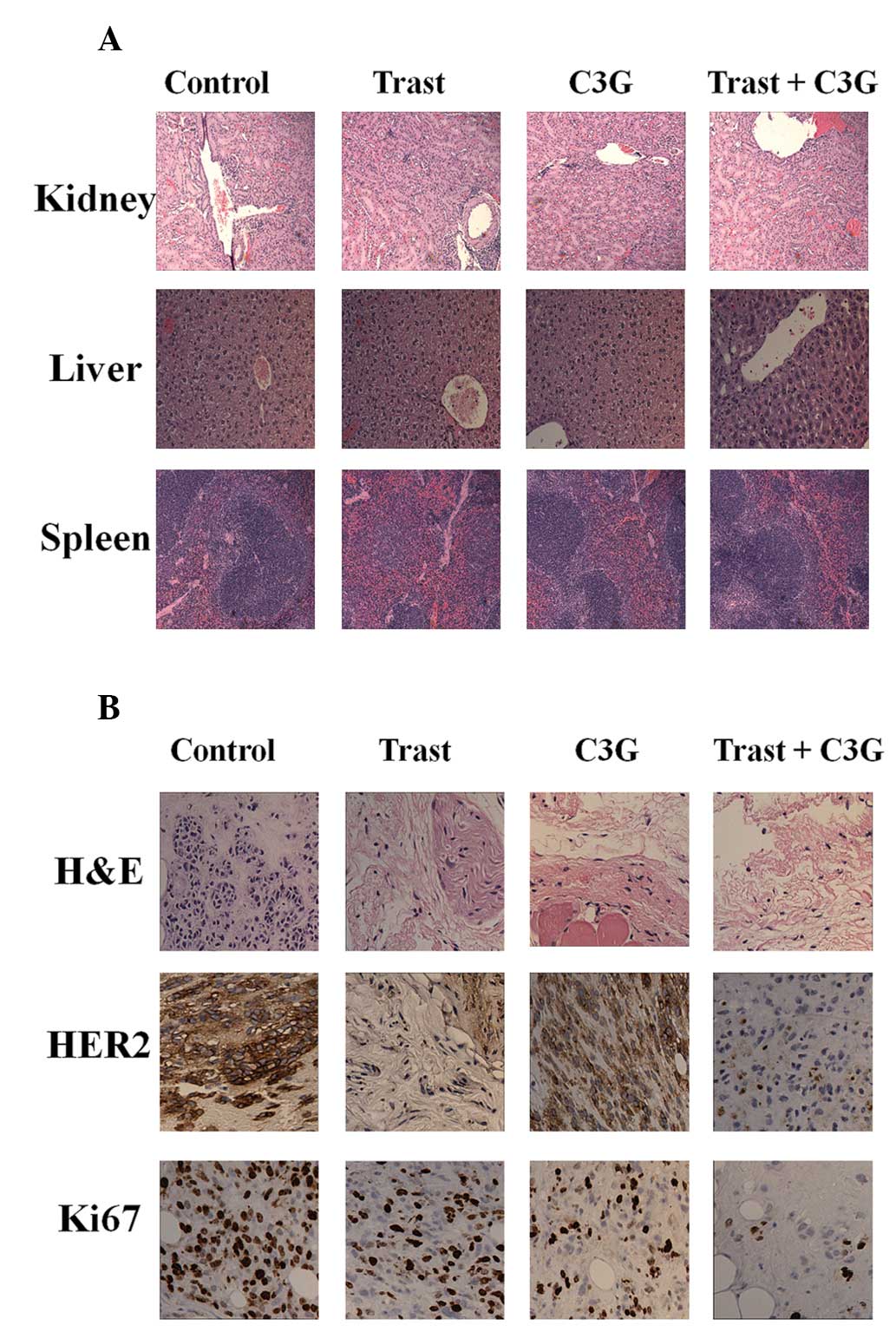|
1
|
American Cancer Society. Cancer Facts
& Figures 2013. American Cancer Society; Atlanta: 2013
|
|
2
|
Lv F, Yu Y, Zhang B, Liang D, Li ZM and
You W: Inhibitory effects of mild hyperthermia plus docetaxel
therapy on ER(+/-) breast cancer cells and action mechanisms. J
Huazhong Univ Sci Technolog Med Sci. 33:870–876. 2013. View Article : Google Scholar : PubMed/NCBI
|
|
3
|
Vrbic S, Pejcic I, Filipovic S, Kocic B
and Vrbic M: Current and future anti-HER2 therapy in breast cancer.
J BUON. 18:4–16. 2013.PubMed/NCBI
|
|
4
|
Marty M, Cognetti F, Maraninchi D, et al:
Randomized phase II trial of the efficacy and safety of trastuzumab
combined with docetaxel in patients with human epidermal growth
factor receptor 2-positive metastatic breast cancer administered as
first-line treatment: the M77001 study group. J Clin Oncol.
23:4265–4274. 2005. View Article : Google Scholar
|
|
5
|
Neve RM, Chin K, Fridlyand J, et al: A
collection of breast cancer cell lines for the study of
functionally distinct cancer subtypes. Cancer Cell. 10:515–527.
2006. View Article : Google Scholar : PubMed/NCBI
|
|
6
|
Slamon DJ, Leyland-Jones B, Shak S, et al:
Use of chemotherapy plus a monoclonal antibody against HER2 for
metastatic breast cancer that overexpresses HER2. N Eng J Med.
344:783–792. 2001. View Article : Google Scholar : PubMed/NCBI
|
|
7
|
Huang C, Lee SY, Lin CL, et al:
Co-treatment with quercetin and
1,2,3,4,6-penta-O-galloyl-β-d-glucose causes cell cycle arrest and
apoptosis in human breast cancer MDA-MB-231 and AU565 cells. J
Agric Food Chem. 61:6430–6445. 2013.PubMed/NCBI
|
|
8
|
Wu XQ, Shao SJ and Qu WC: Effects of ru’ai
shuhou recipe on the matrix metalloproteinases and the inhibitive
factors in the recurrence and metastasis of HER2 positive breast
cancer. Zhongguo Zhong Xi Yi Jie He Za Zhi Zhongguo Zhongxiyi Jie
He Za Zhi. 32:1526–1530. 2012.(In Chinese).
|
|
9
|
Liu W, Xu J, Wu S, et al: Selective
anti-proliferation of HER2-positive breast cancer cells by
anthocyanins identified by high-throughput screening. PloS One.
8:e815862013. View Article : Google Scholar : PubMed/NCBI
|
|
10
|
Chen XQ, Nagao N, Itani T and Irifune K:
Anti-oxidative analysis and identification and quantification of
anthocyanin pigments in different coloured rice. Food chem.
135:2783–2788. 2012. View Article : Google Scholar : PubMed/NCBI
|
|
11
|
Fernandes I, Faria A, Azevedo J, et al:
Influence of anthocyanins, derivative pigments and other catechol
and pyrogallol-type phenolics on breast cancer cell proliferation.
J Agric Food Chem. 58:3785–3792. 2010. View Article : Google Scholar : PubMed/NCBI
|
|
12
|
Bunea A, Rugina D, Sconta Z, et al:
Anthocyanin determination in blueberry extracts from various
cultivars and their antiproliferative and apoptotic properties in
B16-F10 metastatic murine melanoma cells. Phytochemistry.
95:436–444. 2013. View Article : Google Scholar
|
|
13
|
Fernandes I, Marques F, de Freitas V and
Mateus N: Antioxidant and antiproliferative properties of
methylated metabolites of anthocyanins. Food Chem. 141:2923–2933.
2013. View Article : Google Scholar : PubMed/NCBI
|
|
14
|
Heinonen M: Antioxidant activity and
antimicrobial effect of berry phenolics - a Finnish perspective.
Mol Nutr Food Res. 51:684–691. 2007. View Article : Google Scholar : PubMed/NCBI
|
|
15
|
Iriti M and Varoni EM: Chemopreventive
potential of flavonoids in oral squamous cell carcinoma in human
studies. Nutrients. 5:2564–2576. 2013. View Article : Google Scholar : PubMed/NCBI
|
|
16
|
Kamenickova A, Anzenbacherova E, Pavek P,
et al: Effects of anthocyanins on the AhR-CYP1A1 signaling pathway
in human hepatocytes and human cancer cell lines. Toxicol Lett.
21:1–8. 2013. View Article : Google Scholar
|
|
17
|
Chen PN, Chu SC, Chiou HL, Kuo WH, Chiang
CL and Hsieh YS: Mulberry anthocyanins, cyanidin 3-rutinoside and
cyanidin 3-glucoside, exhibited an inhibitory effect on the
migration and invasion of a human lung cancer cell line. Cancer
Lett. 235:248–259. 2006. View Article : Google Scholar : PubMed/NCBI
|
|
18
|
Chen PN, Chu SC, Chiou HL, Chiang CL, Yang
SF and Hsieh YS: Cyanidin 3-glucoside and peonidin 3-glucoside
inhibit tumor cell growth and induce apoptosis in vitro and
suppress tumor growth in vivo. Nutr Cancer. 53:232–243. 2005.
View Article : Google Scholar : PubMed/NCBI
|
|
19
|
Ding M, Feng R, Wang SY, et al:
Cyanidin-3-glucoside, a natural product derived from blackberry,
exhibits chemopreventive and chemotherapeutic activity. J Biol
Chem. 281:17359–17368. 2006. View Article : Google Scholar : PubMed/NCBI
|
|
20
|
Cooke D, Schwarz M, Boocock D, et al:
Effect of cyanidin-3-glucoside and an anthocyanin mixture from
bilberry on adenoma development in the ApcMin mouse model of
intestinal carcinogenesis - relationship with tissue anthocyanin
levels. Int J cancer. 119:2213–2220. 2006. View Article : Google Scholar
|














